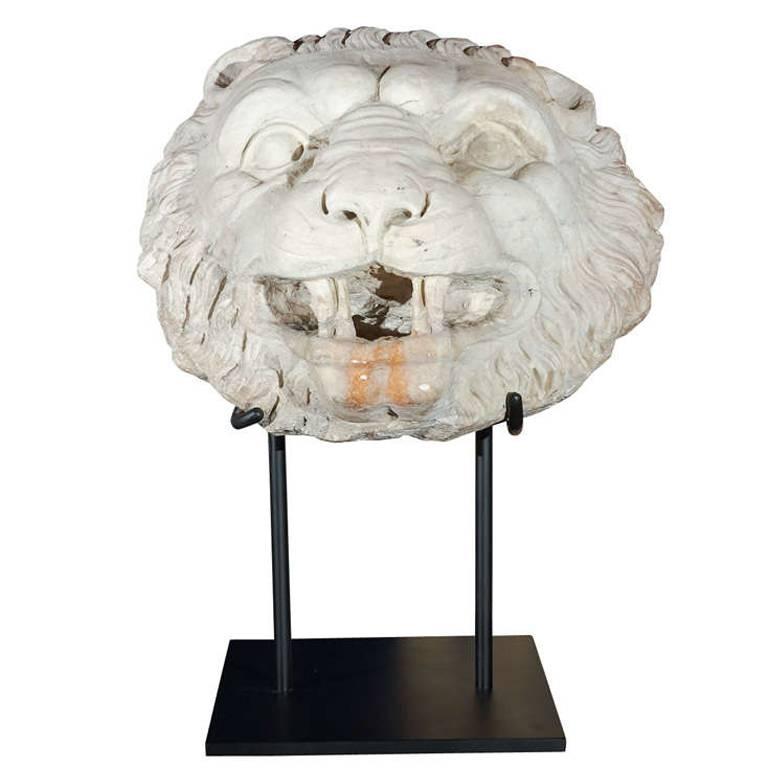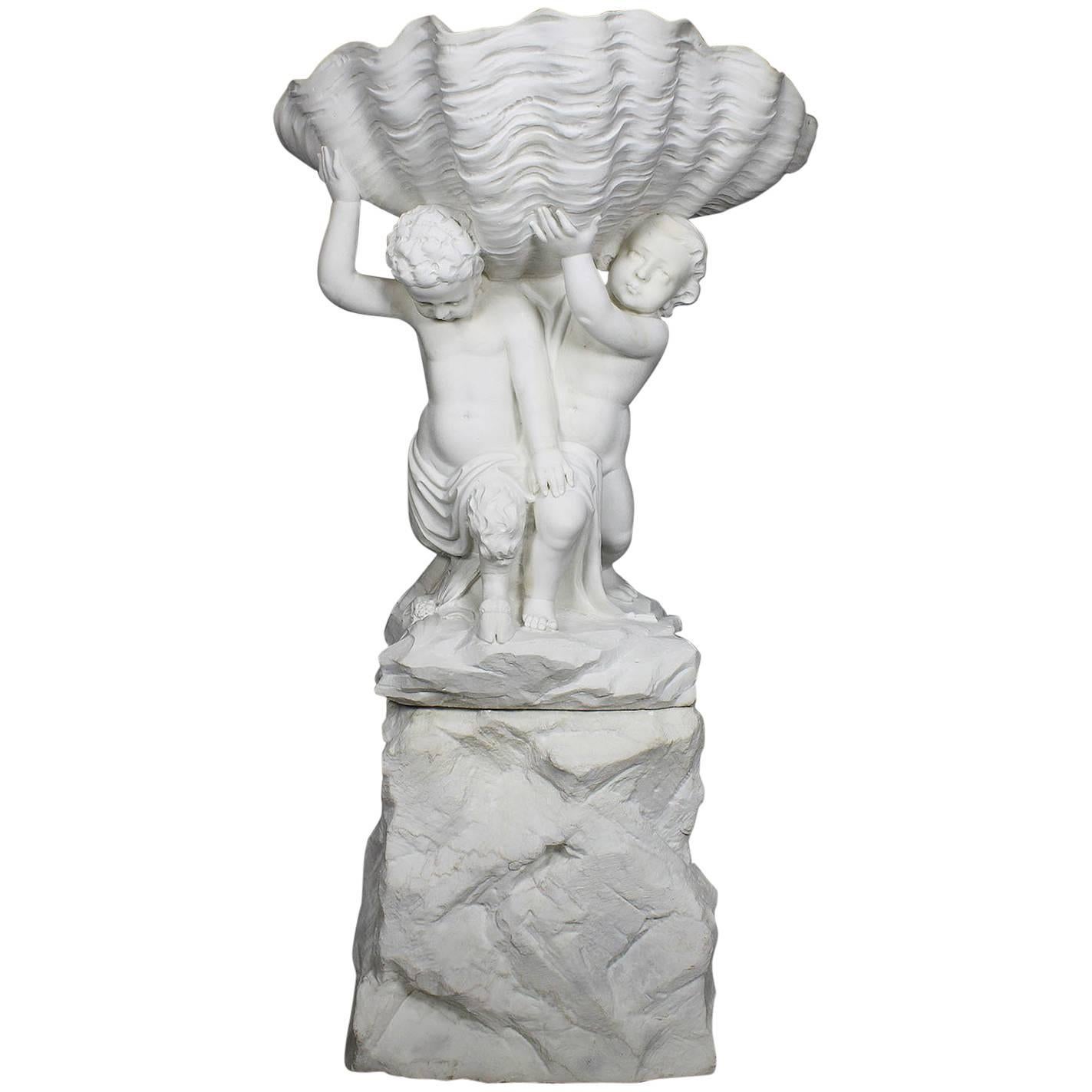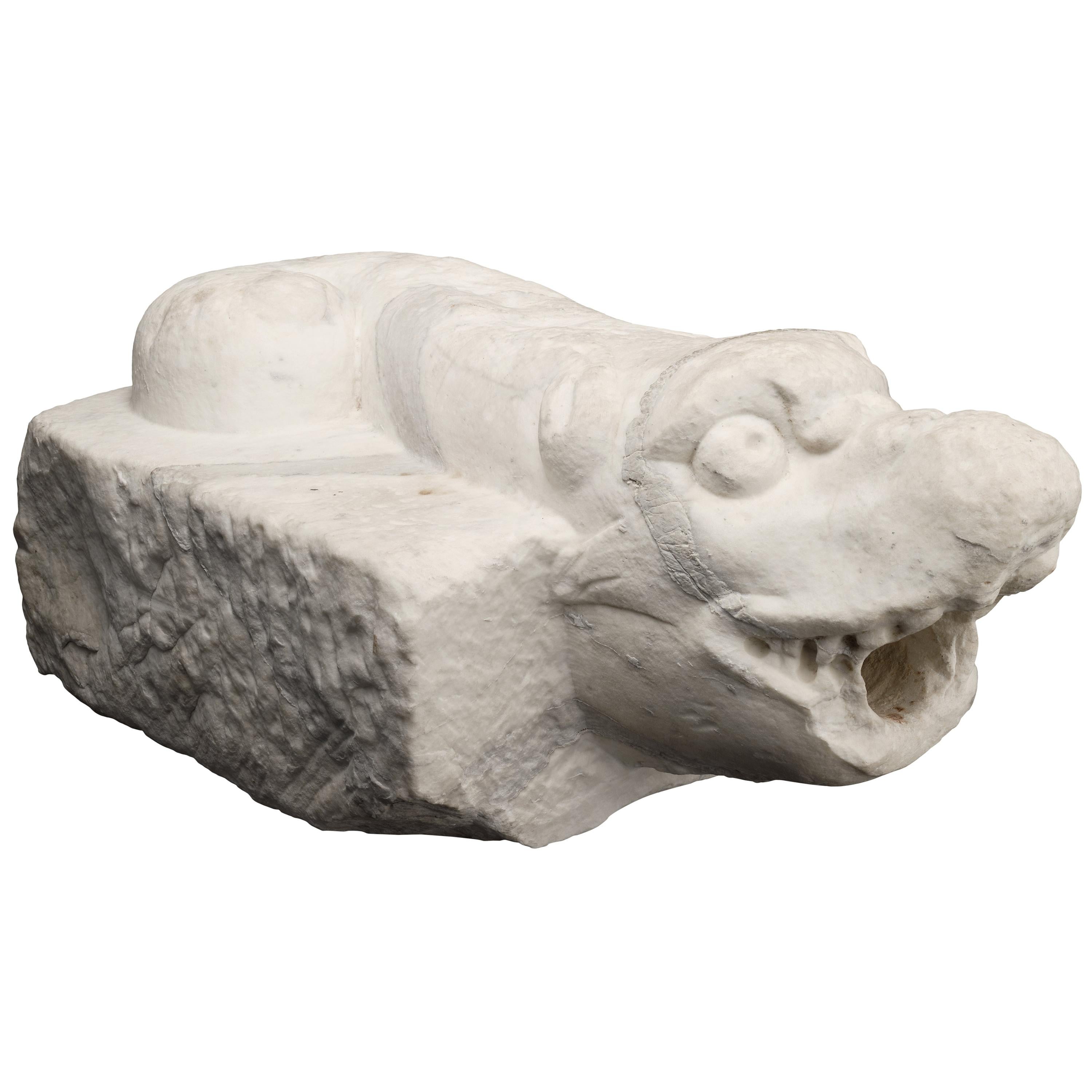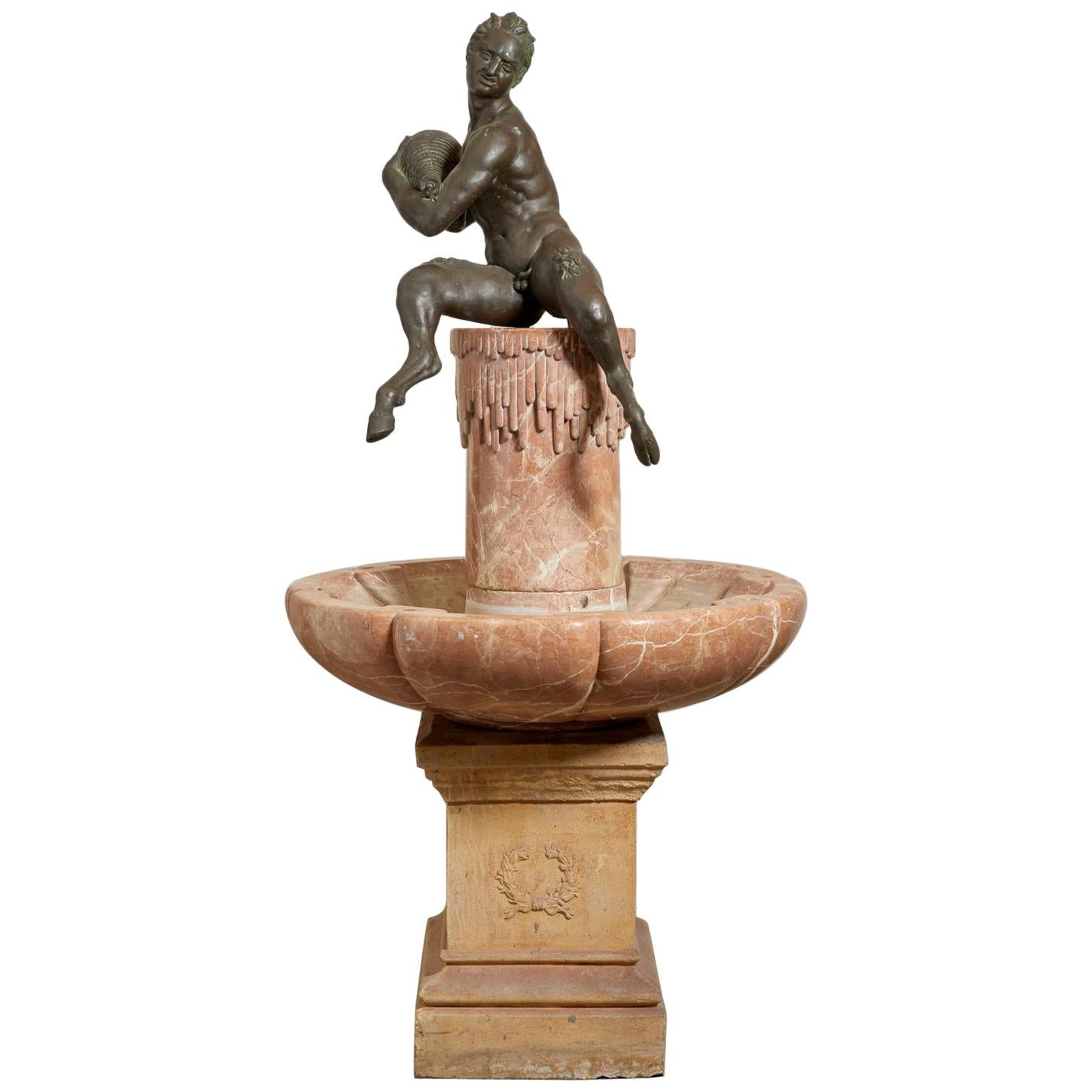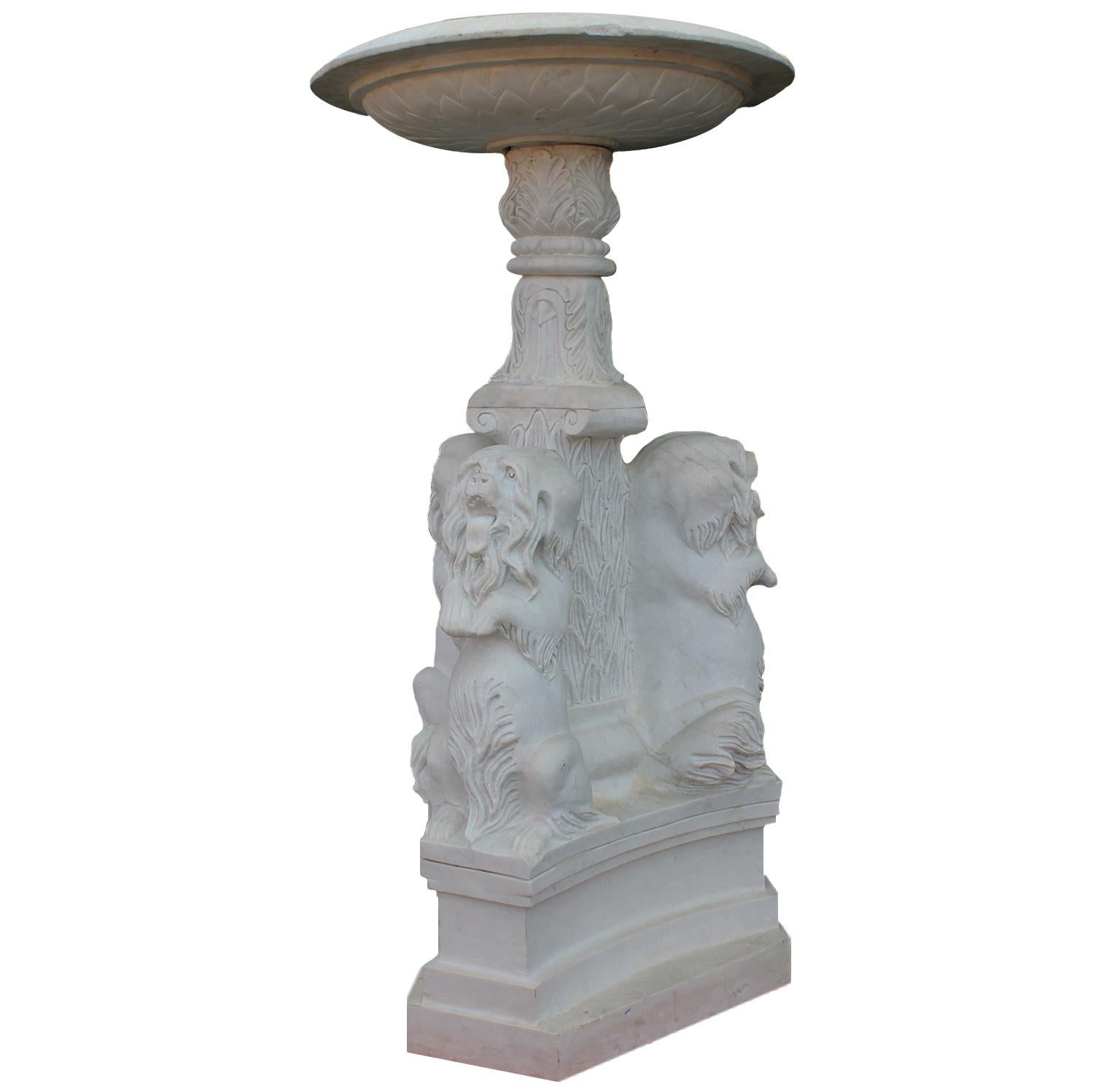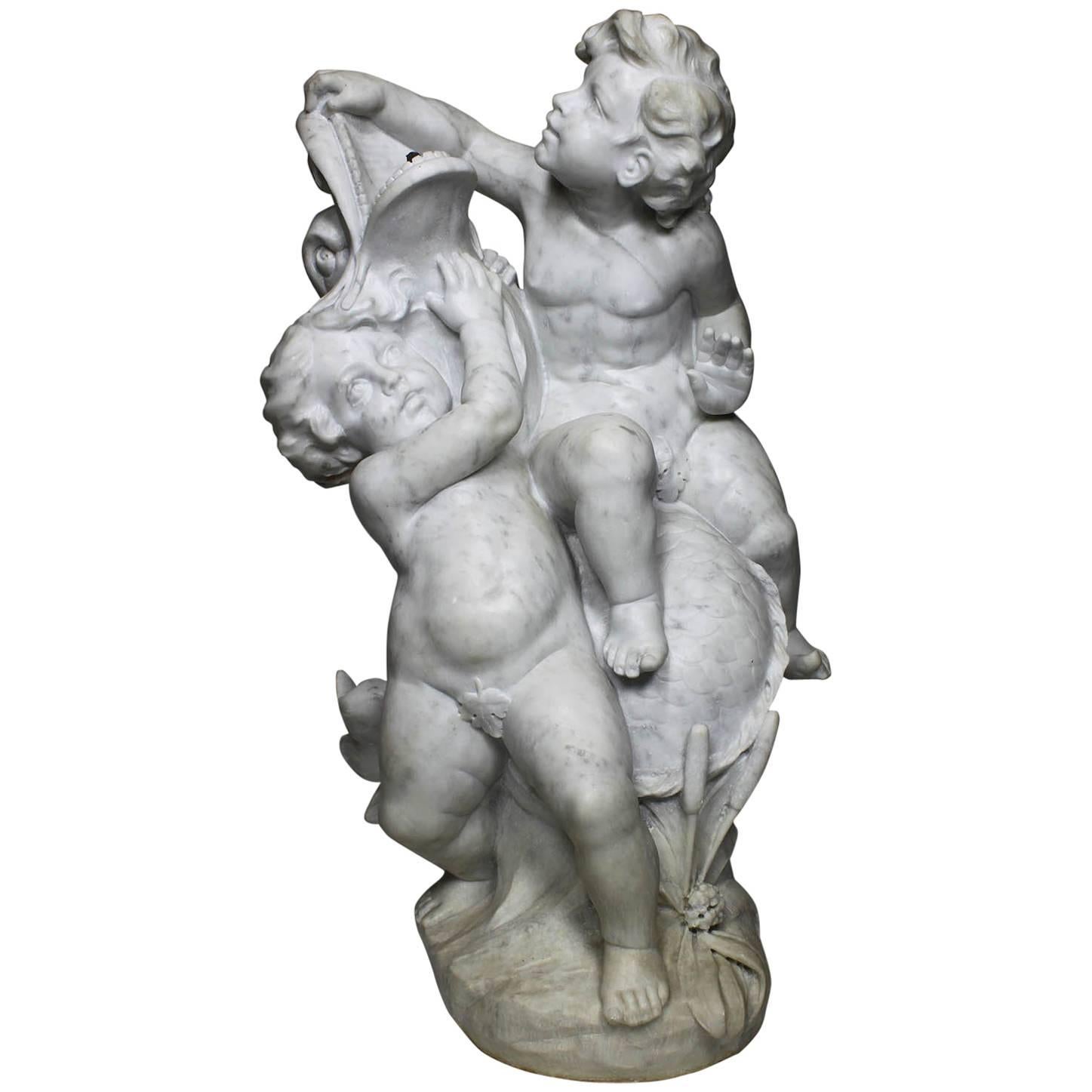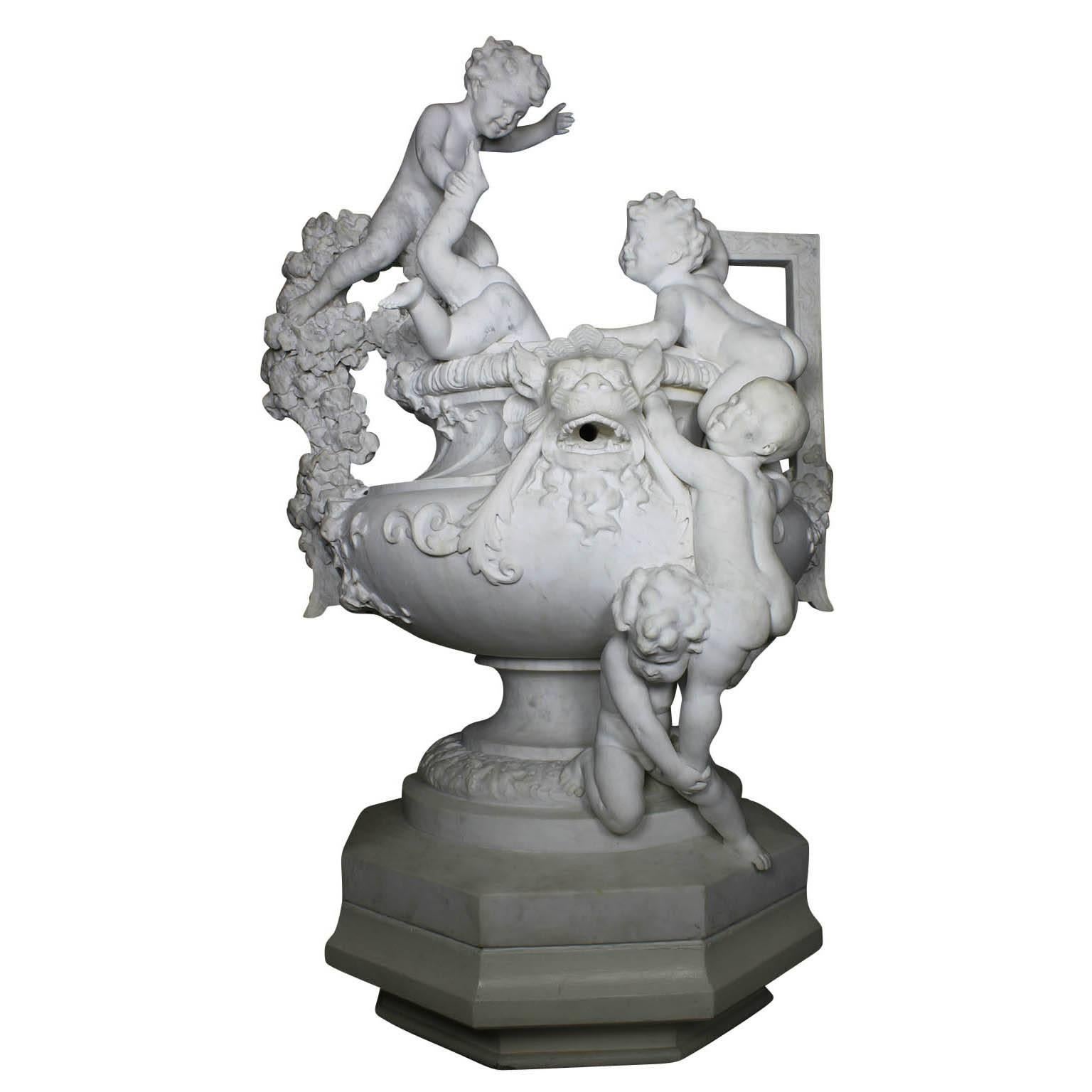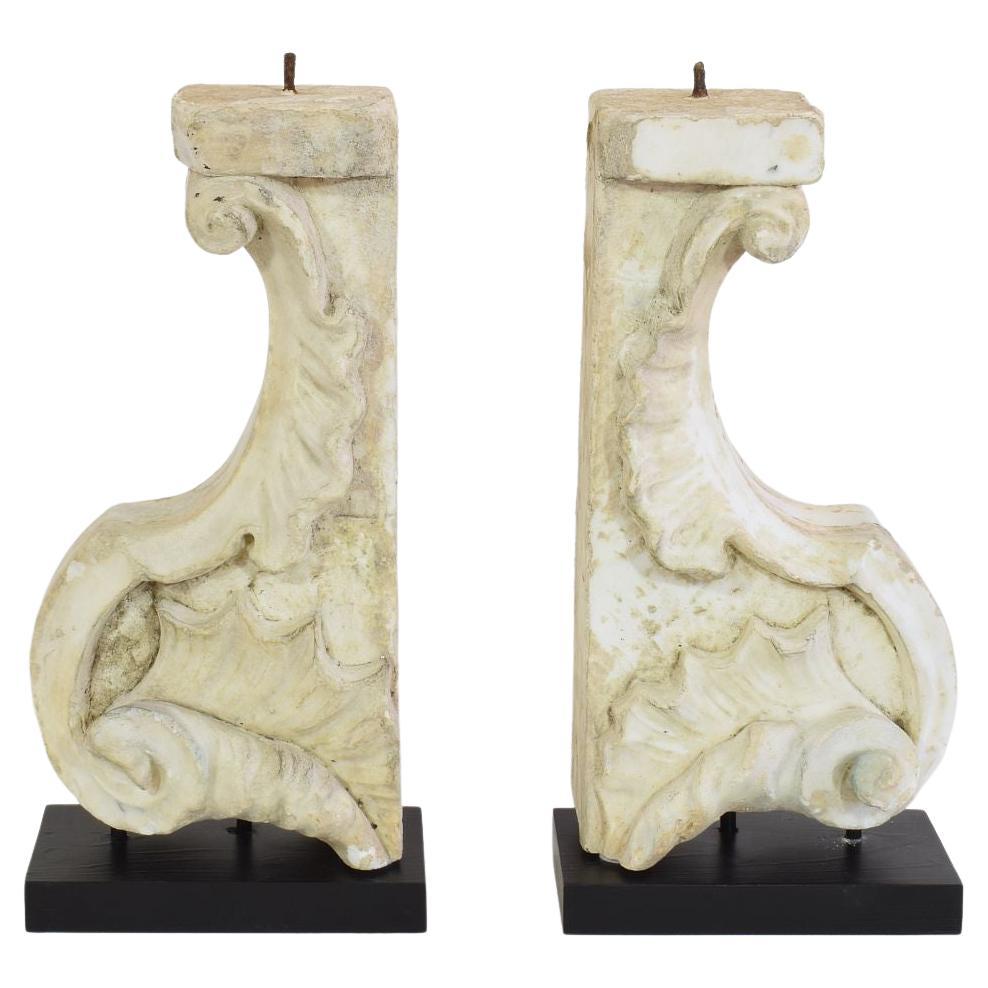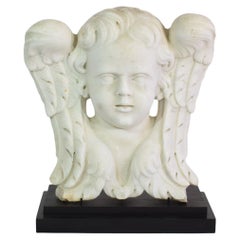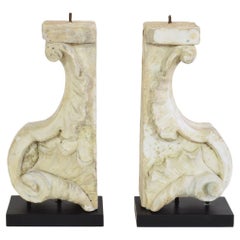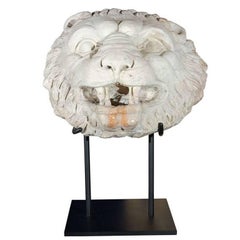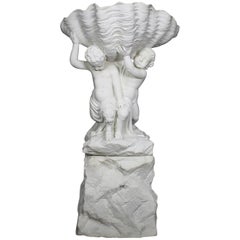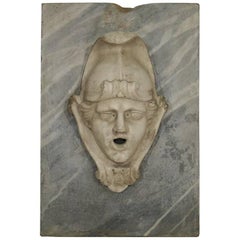
Italian 17th-18th Century Marble Fountain Head
View Similar Items
Want more images or videos?
Request additional images or videos from the seller
1 of 11
Italian 17th-18th Century Marble Fountain Head
About the Item
- Dimensions:Height: 19.75 in (50.17 cm)Width: 13.5 in (34.29 cm)Depth: 6.75 in (17.15 cm)
- Style:Baroque (Of the Period)
- Materials and Techniques:
- Place of Origin:
- Period:
- Date of Manufacture:circa 1650-1750
- Condition:Wear consistent with age and use. Minor losses. Weathered,small losses and old repairs. More pictures are available on request.
- Seller Location:Buisson, FR
- Reference Number:Seller: 1600241stDibs: LU252539023071
About the Seller
5.0
Platinum Seller
These expertly vetted sellers are 1stDibs' most experienced sellers and are rated highest by our customers.
Established in 2013
1stDibs seller since 2017
1,109 sales on 1stDibs
Typical response time: 2 hours
More From This SellerView All
- Italian, 17th / 18th Century Carved White Marble Winged Angel Head OrnamentLocated in Buisson, FRBeautiful and unique handcarved white marble winged angel head ornament that once adorned a facade. Italy, circa 1650-1750. Weathered and small losses. Measurement includes the wo...Category
Antique 17th Century Italian Baroque Figurative Sculptures
MaterialsMarble
$2,829 Sale Price48% Off - Pair of 17th/ 18th Century Italian White Marble Baroque OrnamentsLocated in Buisson, FRUnique and very beautiful pair weathered white marble baroque ornaments. They most likely once adorned a church altar. Original period pieces, Italy, ci...Category
Antique 17th Century Italian Baroque Architectural Elements
MaterialsMarble
$983 Sale Price / set52% Off - Italian 17th/ 18th Century Giltwood Baroque OrnamentLocated in Buisson, FRBeautiful carved giltwood baroque ornament. Italy, 17/18th century. Weathered and small losses. Measurement includes the wooden base.Category
Antique 18th Century Italian Baroque Figurative Sculptures
MaterialsWood
$499 Sale Price53% Off - 17th / 18th Century Italian Wooden Foot of a SantosLocated in Buisson, FRWonderful decorative item. Italy circa 1650-1750 Weathered.Category
Antique 17th Century Italian Baroque Figurative Sculptures
MaterialsOak
$499 Sale Price53% Off - 17th-18th Century Italian Hand Carved Wooden Reliquary BustLocated in Buisson, FRSpectacular and very decorative piece. Carved wooden reliquary bust representing a Saint figure. Beautiful traces of its original silver and gilding. Weathered, small losses and with...Category
Antique 17th Century Italian Baroque Figurative Sculptures
MaterialsWood
$2,719 Sale Price49% Off - French, 19th Century Bronze Lion Fountain HeadLocated in Buisson, FRWonderful bronze fountain head with a great expression and a beautiful vert de gris patina. France, circa 1850-1900. Weathered.Category
Antique 19th Century French Belle Époque Fountains
MaterialsBronze
$1,263 Sale Price41% Off
You May Also Like
- 17th Century, Carrera Marble Lion Fountain HeadLocated in Newport Beach, CAStunning, solid white, Carrara marble lions head from a fountain in Florence featuring a flowing main and a fabulous patina. Mounted on a custom, iron base. The piece hails from the ...Category
Antique Early 1600s Italian Sculptures
MaterialsMarble
- Italian 19th Century Carved Carrara Marble Figural Fountain Jardinière PlanterBy Giovanni Battista LombardiLocated in Los Angeles, CAA very fine Italian 19th century carved Carrara marble figural fountain "Jardinière" modelled as a standing Putto and a Satyr supporting a sea-sh...Category
Antique 19th Century Italian Baroque Figurative Sculptures
MaterialsCarrara Marble
$29,850 Sale Price33% Off - Italian Ancient Marble Sculpture Fountain, Late 16th CenturyLocated in Milano, ITSea monster Carrara marble mouth fountain Italy, late 16th century It measures 13.8 x 31.5 x 18.9 in (35 x 80 x 48 cm) State of conservation: some small evident gaps and widespread signs of wear due to outdoor exposure. The gray marks crossing it do not come from restoration, but are rather the natural veins of the marble. This work has some morphological characteristics typically associated with the iconography of the sea monster: an elongated muzzle, sharp teeth, protruding eyes, elongated ears, and a coiled serpent's tail. An in-depth series of studies on artistic depictions of the sea monster attempted to verify how this symbol evolved in antiquity in the European and Mediterranean contexts and how it gradually changed its image and function over time. The iconography itself is mutable and imaginative and its history is rich with cultural and artistic exchange, as well as the overlapping of ideas. This occurred so much that it is difficult to accurately pinpoint the "types" that satisfactorily represent its various developments. However, we can try to summarize the main figures, starting from the biblical Leviathan and the marine creature that swallowed Jonah (in the Christian version, this figure was to become a whale or a "big fish", the “ketos mega”, translation of the Hebrew “dag gadol”). Other specimens ranged from the dragons mentioned in the Iliad (which were winged and had legs) to "ketos” (also from Greek mythology), the terrifying being from whose Latinized name (“cetus”) derives the word "cetacean". See J. Boardman, “Very Like a Whale” - Classical Sea Monsters, in Monsters and Demons in the Ancient and Medieval Worlds, in Papers presented in Honor of Edith Porada, Mainz am Rhein 1987, pp. 73-84). In Italy the monster underwent yet further variations: it can be found in Etruscan art on the front of some sarcophagi representing the companion of souls, while among the Romans we find the “Pistrice” (cited by Plinio in Naturalis Historia PLIN., Nat., II 9, 8 and by Virgilio in Eneide: VERG., Aen., III, 427), which appeared in the shape of a stylized hippocampus or a very large monstrous cetacean and evolved into a hideous being with a dragon's head and long webbed fins. During the Middle Ages, the sea monster was the object of new transformations: at this time, it is often winged, the head is stretched like a crocodile, the front legs are often very sharp fins - sometimes real paws - until the image merges with dragons, the typical figures of medieval visionary spirituality widely found throughout Europe (on this topic and much more, see: Baltrušaitis, J., Il Medioevo fantastico. Antichità ed esotismi nell’arte gotica, Gli Adelphi 1997). In Italy during the 15th and 16th centuries, the revival of classicism - representative of the humanistic and Renaissance periods - led to a different reading of these "creatures". Indeed, the sea monster was also to find widespread use as an isolated decorative motif, especially in numerous fountains and sculptures where dolphins or sea monsters were used as a characterizing element linked to water (on this theme see: Chet Van Duzer, Sea Monsters on Medieval and Renaissance Maps, London, The British library, 2013). From the morphological point of view, the "sea monsters" of this period are mostly depicted as hybrid figures, in which the body of a mythological or real being (a hippocampus, a sea snake, a dolphin), is joined to a head with a rather indistinct appearance. It was usually characterized by large upright ears, an elongated snout, sharp teeth and globular, protruding eyes; a complex and indefinite figure, both from the symbolic point of view and from that of its genesis. The work we are examining is placed as a cross between the medieval sea serpent and the Renaissance dolphin, with stylistic features which recall the snake as often used in heraldry (such as the "snake" depicted in the coat of arms of the Visconti - the lords and then dukes of Milan between 1277 and 1447 - and which, for some, may be derived from the representations of the “Pistrice” that swallowed Jonah). In the search for sources, Renaissance cartography and in particular woodcuts should not be neglected. See for example the monsters of Olaus Magnus, from the editions of the “Historia de gentibus septentrionalibus” (“History of the peoples of the north”) and the natural histories of Conrad Gesner, Ulisse...Category
Antique 16th Century Italian Renaissance Animal Sculptures
MaterialsCarrara Marble
- 19th Century Large Circular Garden Fountain Neptune, Italian Limestone FountainLocated in West Palm Beach, FLMonumental antique Italian three-tiered garden fountain. Four Cariatidi surround the center base raising the water which spells from the waved shells. The second tier is supported by...Category
Antique Early 19th Century Italian Baroque Fountains
MaterialsLimestone
- 19th Century French Marble and Bronze FountainLocated in Essex, MA19th century French marble and bronze fountain. Seated satyr on marble column with marble shell basin. Later cast stone plinth. Wonderful garden ele...Category
Antique Late 19th Century French Louis XV Figurative Sculptures
MaterialsMarble, Bronze
- 20th Century Italian Stone Fountain MaskLocated in Milan, ITThis antique stone mask was probably used in a fountain. It is a very decorative Italian antique object. The mask fits as decorative object on a bureau o...Category
Early 20th Century European Classical Roman Animal Sculptures
MaterialsStone
